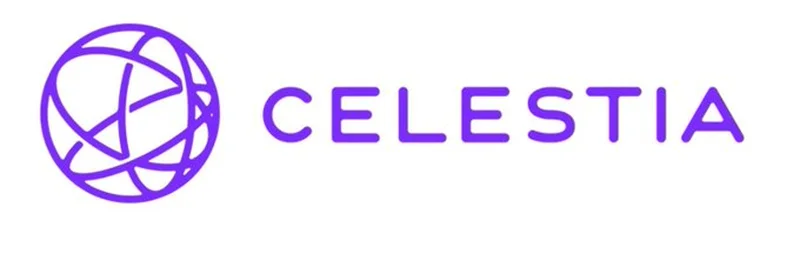Hey there, crypto enthusiasts! If you’ve been keeping an eye on the blockchain space, you’ve probably heard whispers about Celestia—a modular blockchain that’s shaking things up. A recent thread on X by @cryptovlat dives deep into why Celestia might be the next big thing, and we’re here at Meme Insider to break it down for you in a fun, easy-to-digest way. Let’s explore what makes Celestia tick and why it’s catching the attention of investors and developers alike.
What’s the Buzz About Celestia?
Celestia stands out because it’s designed as a modular blockchain, meaning it separates different functions like data availability, transaction execution, and consensus. This approach aims to solve the blockchain trilemma—balancing security, decentralization, and scalability. The thread highlights how Celestia is currently sitting at just 0.5% of Ethereum’s market cap, with its token ($TIA) showing promise as token unlocks wrap up in November 2025. But it’s not just about the numbers—Celestia’s unique setup is paving the way for something bigger.
Imagine you’re building a Lego set. With traditional blockchains like Ethereum, everything—data storage, smart contracts, and more—is built into one block. Celestia, however, lets you use different Lego pieces for each job, making it easier to scale and customize. This modularity is a game-changer, especially for rollups—Layer 2 solutions that process transactions off-chain to boost speed and cut costs.
Rollups and the Interoperability Edge
One of the coolest points from the thread is how Celestia is positioning itself as a hub for rollups. Rollups bundle transactions and post them to a Layer 1 blockchain, and Celestia’s role as a data availability (DA) layer is key here. Data availability ensures that all transaction data is accessible for verification, which keeps the network honest and decentralized. The thread suggests that as more sovereign chains (blockchains with their own rules) use Celestia’s DA layer, it could become the go-to standard, creating a seamless experience for users across different ecosystems.
Think of it like a universal shipping hub. Instead of every chain building its own shipping network, they can rely on Celestia to handle the data logistics. This could give Celestia some serious pricing power and network effects, where more usage leads to even more adoption. Plus, with Ethereum’s data capacity already at 72% and growing, Celestia’s ready to step in and meet the demand.
The “Accidental Computer” Vision
Here’s where it gets exciting. The thread proposes that Celestia might accidentally evolve into a competitor to Ethereum, dubbed the “Accidental Computer.” If rollups start posting execution proofs to Celestia instead of Ethereum, it could offer a cheaper, faster way to verify transactions while keeping chains sovereign. This means developers can build with any virtual machine (VM) they like, without being tied to Ethereum’s ecosystem.
It’s not about replacing Ethereum’s smart contracts but offering a simpler, less complex alternative. The thread even pokes fun at Celestia’s “Lazy” branding (sorry, sloths!), arguing that it’s doing more than meets the eye by enabling a robust, scalable system. This could make Celestia a coordination hub for rollups, potentially rivaling Ethereum’s role as the “world computer.”
Fees, MEV, and the Long Game
Let’s talk money. The thread admits Celestia’s fees aren’t impressive yet, but it argues that’s okay—this is still early days. Just like Ethereum in 2017 or Solana in 2021, the focus is on positioning, not immediate profits. Over the next five years, Celestia could capture more fees as its ecosystem grows. There’s also mention of Miner Extractable Value (MEV), the profit validators can make by reordering transactions. While monolithic chains like Ethereum might lose MEV to alternative scaling solutions (ASS), Celestia’s design could give it an edge in capturing this value.
Another angle is the shift from users holding surplus tokens to businesses doing so. With tools like gas abstraction (hiding gas fees from users) and projects like Infinex, businesses are streamlining the crypto experience, and Celestia’s upcoming Lotus upgrade could make cross-chain asset movement a breeze.
Why the Bullish Outlook?
So, why all the hype? The thread paints a picture of green candles (price increases) driven by a strong narrative. Celestia’s team is focused, its scaling path is clear, and it’s perfectly timed to meet exploding demand for decentralized blockspace. With Ethereum in a “war time” phase—pushing to expand capacity—Celestia has a window to shine. All it needs is one breakout app or chain to prove its worth, and the dominoes could start falling.
The author, who holds $TIA, $ETH, and $SOL and plans to buy more $TIA, sees tailwinds for Celestia while other ecosystems struggle. It’s a bold bet, but the potential to become a major DA provider and Ethereum competitor is hard to ignore.
Final Thoughts
Celestia is more than just another blockchain—it’s a modular revolution with the potential to redefine how we think about scalability and interoperability. Whether it becomes the “Accidental Computer” or a key player in the rollup world, the future looks bright. If you’re into crypto investing or just curious about the next big thing, keep an eye on $TIA and Celestia’s progress. What do you think—ready to jump on the Celestia train? Drop your thoughts in the comments, and stay tuned to Meme Insider for more blockchain insights!


